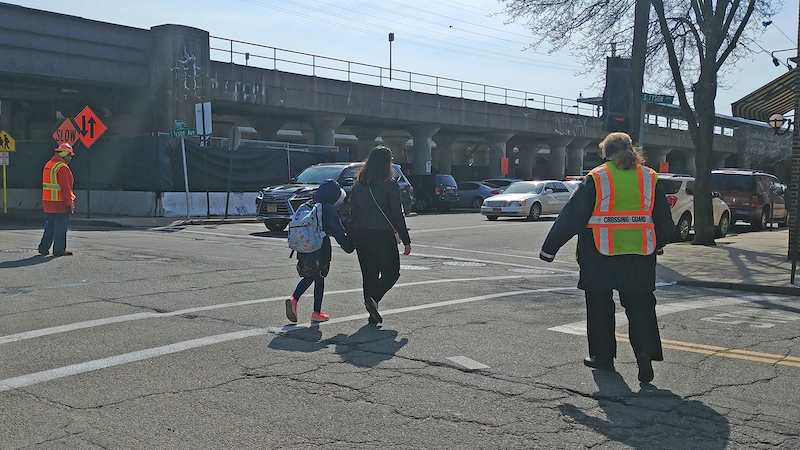The results from the LIRR expansion team’s first-quarter community scorecards are in: Long Islanders gave the highest marks to construction in Hicksville and Garden City Park and their lowest to the project in Carle Place and Floral Park.
As part of the LIRR’s expansion project from Floral Park to Hicksville, the survey determines how much money from a bonus reward third track contractors earn from the project’s overall budget throughout a development year.
“We feel our incentive program is another example of how the LIRR Expansion Project is a model of what we are doing differently to get projects finished on schedule and on budget,” Aaron Donovan, a Metropolitan Transportation Authority spokesman, said.
The LIRR and MTA’s “Design-Builder Incentive Program” requires third track contractors to adhere to a series of environmental and community guidelines in coordination with the communities where development is taking place in return for a monetary reward. For every quarter, community scorecards are distributed throughout the development areas and the results of these surveys determine how much of a monetary reward the contractors receive. A total of 2,700 scorecards were distributed throughout development areas and elicited 405 responses.
For the first quarter of 2019, Jan. 1 to March 31, the third track team was awarded $188,500 out of a maximum of $250,000.
The team also released its average score by every community it surveyed. Hicksville was in first place with a 100 percent approval rating. Garden City Park was second to Hicksville with a 93.75 percent approval rating. Garden City was third with an 81.05 percent approval rating.
New Hyde Park was fourth with a 76.53 percent approval rating followed by New Cassel at 75 percent. New Hyde Park Mayor Lawrence Montreuil did not respond to requests for comment on the survey.
Mineola was in sixth place with a 74.38 percent approval rating. Mineola Mayor Scott Strauss said in a statement, “I think it’s a great tool they are using to hopefully mitigate any negative impacts on the communities involved. I hope as many people as possible participate in these surveys.”
Floral Park and Carle Place were the two lowest named communities with 66.23 percent and 53.83 percent ratings, respectively.
In an interview, Floral Park Mayor Dominick Longobardi said, “It’s growing pains.” The reason for having one of the lowest approval ratings among Long Island communities, Longobardi said, is the amount of third track construction going on in Floral Park. At the moment, the third track team is working on the South Tyson Avenue Bridge, constructing a wall along Terrace Avenue, and maintaining the railroad’s right-of-way.
Longobardi said he and the board are working and communicating with both the 3TC and Floral park residents to mediate problems. The mayor said he believes the ratings will go up for the next quarter’s scorecard. “It’s a lot smoother now,” Longobardi said.
A category defined as “Other” had an approval rating of 50.67 percent. Donovan said in an email “the “Other” category comprises residents who responded anonymously as well as [residents, commuters or stakeholders] who live beyond the project corridor but are still affected by the project or have an opinion.”
Donovan said that examples of people polled for this category could include someone who lives in Syosset but used to drive to the Mineola Harrison Lot before construction began or someone from Salisbury who commutes from the Westbury Station.
The positives that the 3TC found from the 405 surveys was an 80 percent approval rating for protecting access to businesses, 79 percent for notifying commuters about station platform and parking changes, and 78 percent for responding to hotline inquiries.
The survey also concluded, however, that the constractors had areas where they could improve. The team received a low 45 percent for handling noise vibrations from construction, 36 percent for traffic detours and 36 percent for controlling street debris.
“As far as addressing areas that need improvement, that’s really the purpose of the program. If the numbers look low in a particular area, on this project there is a financial incentive for the contractor to address those issues,” Donovan said. “This has already resulted in 3TC reminding employees that their performance and interactions with the public are being graded and are reflected in the bonus award.”
In the summer of 2018, Donovan said the MTA and LIRR did a pilot of the scorecard with the first official cards being physically and digitally distributed in the fourth quarter of 2018. This is the second community survey. The community scorecard for the second quarter of 2019, April 1 to June 30, was due on July 31.
If a resident lives within approximately 400 feet of a project element, a Community Scorecard is been mailed to their home. If a resident lives outside this radius, they can complete the surveys online.



